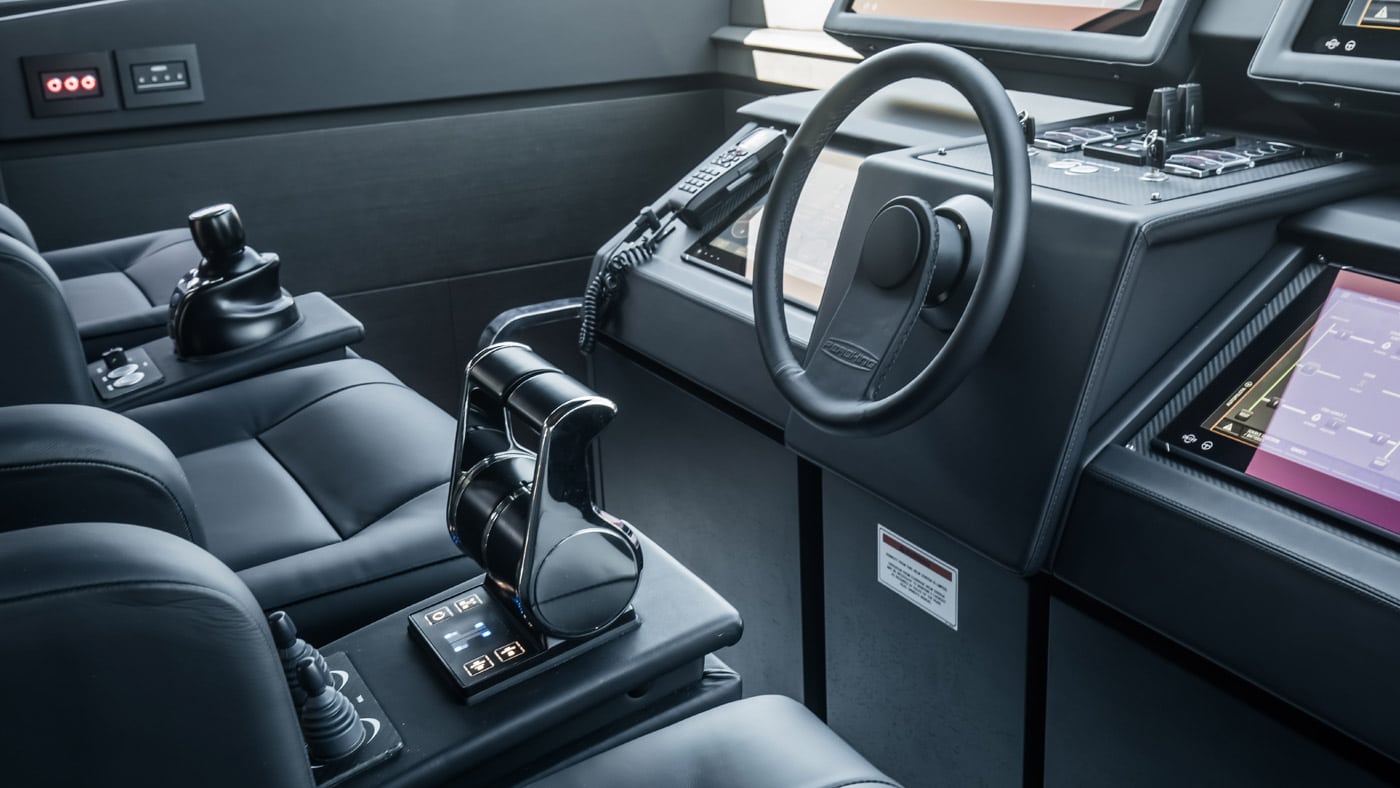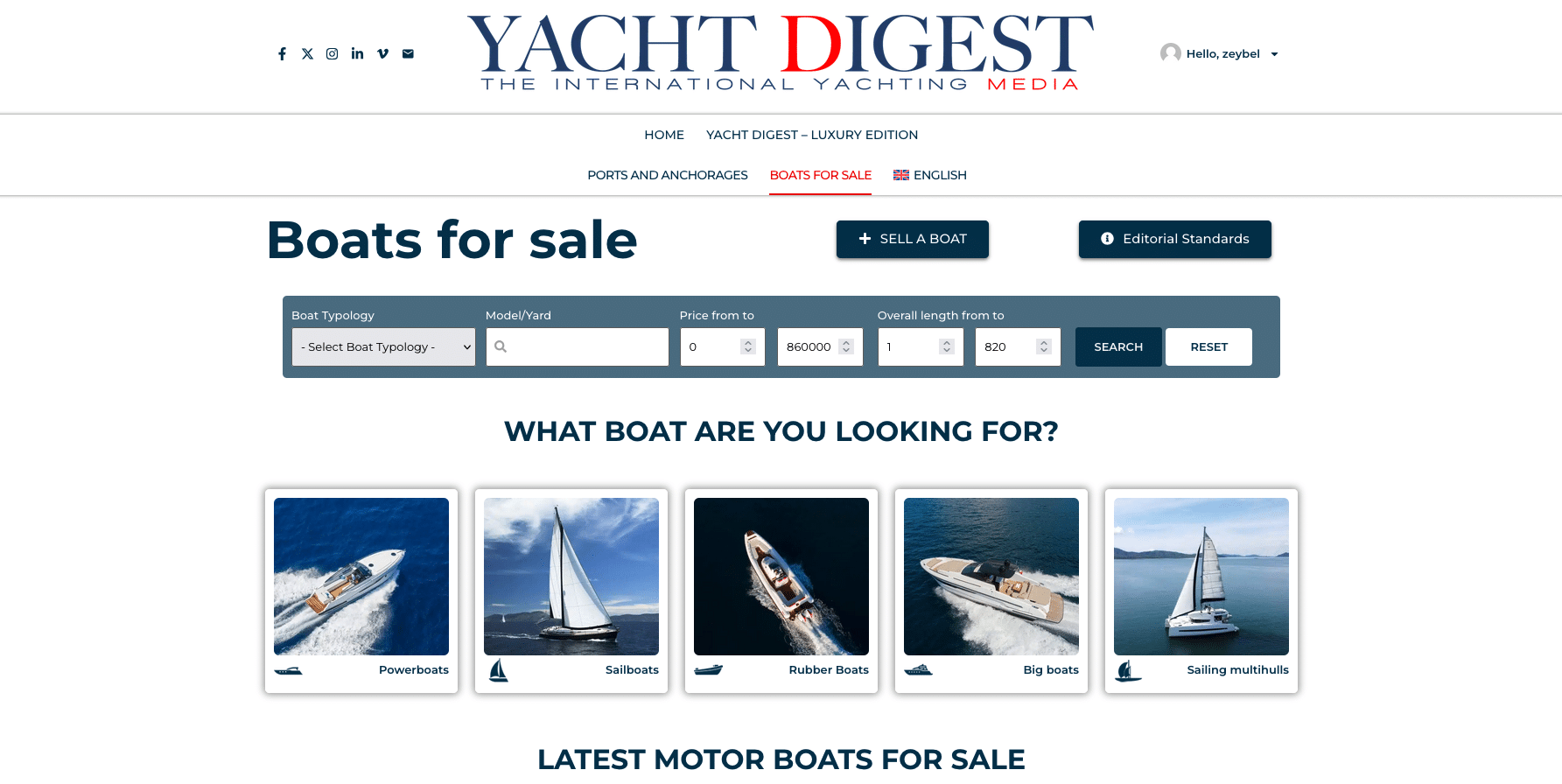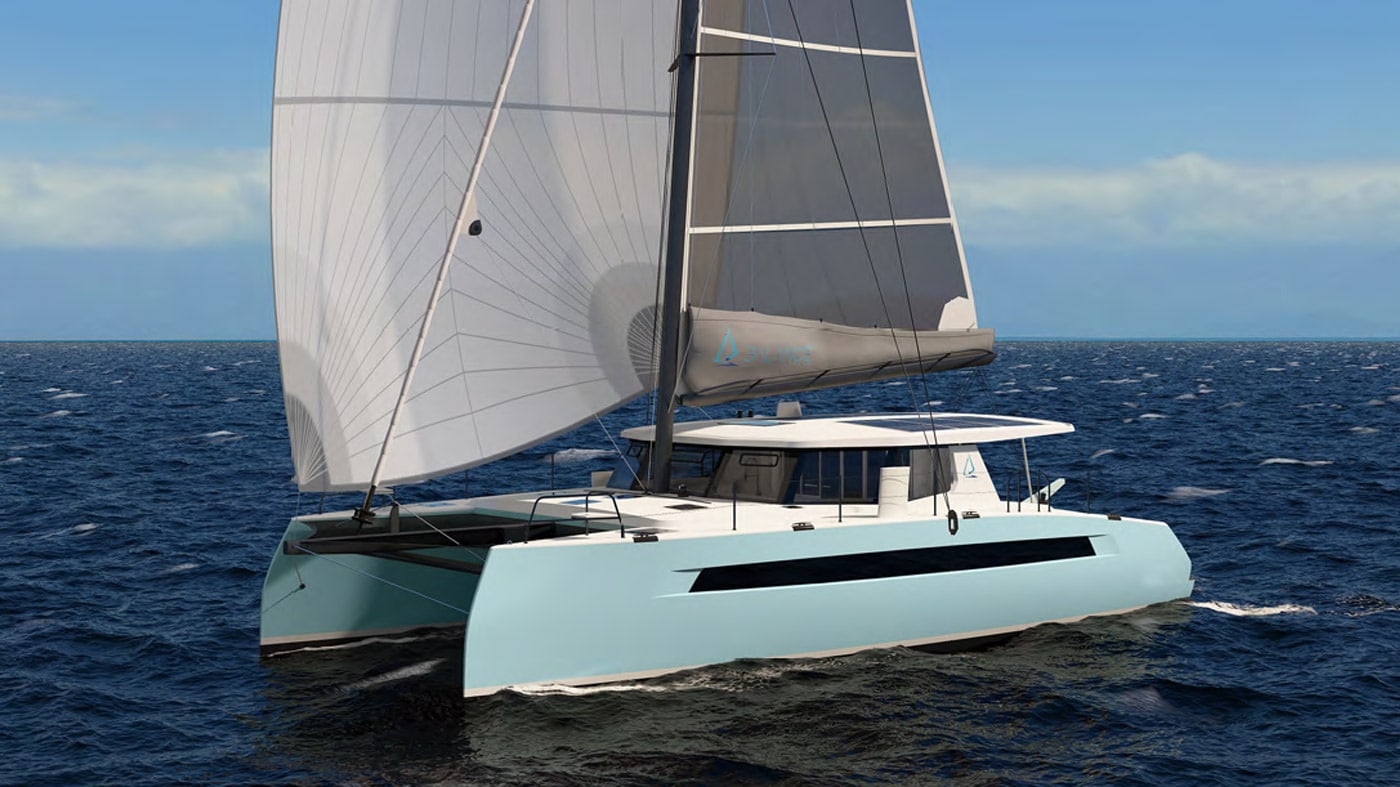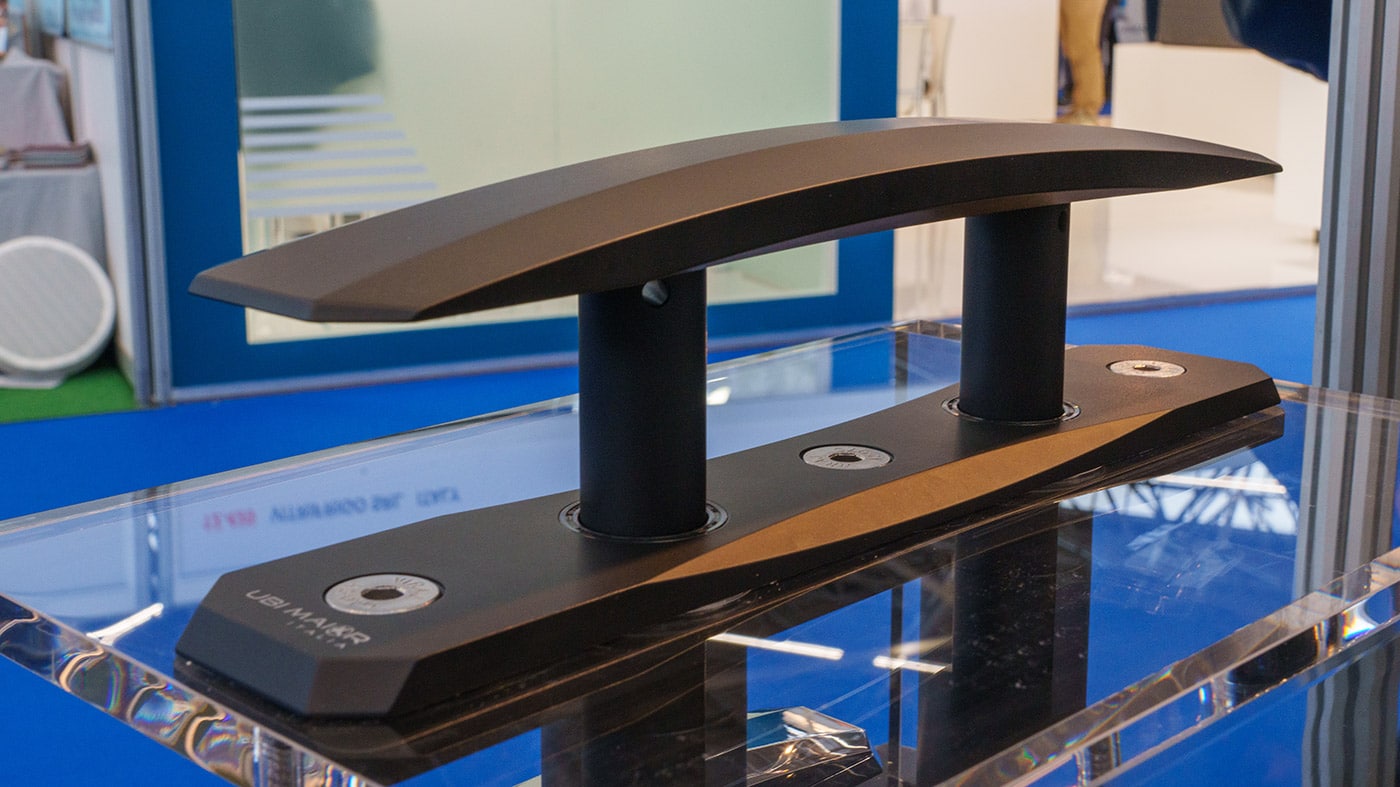The Dehler 38 C Sea Trial .
In a historic period for global yachting, where all boat manufacturers have decided to head for a substantial division between racers, whose lines are becoming increasingly more essential, and cruisers, which are increasingly more spacious and equipped, Dehler has had the courage to propose a model, among the few left on the market, which can perform both functions very well.
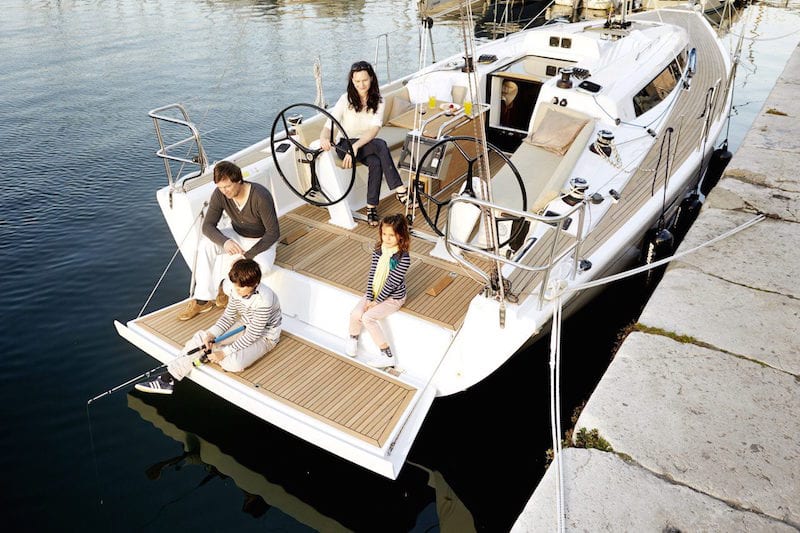
The boat is offered in two different versions: standard and competition. The latter features augmented draft and sail areas. For the most demanding customers, the boat can be even fitted with optional carbon mast and carbon boom.
During our sea trial, carried out in Lignano, in the Adriatic Sea, on a beautiful day, we have wanted to verify whether, with this project, the shipyard has respected the needs arising from these two essential points, which are also the concepts expressed by the Dehler’s advertising claim: winning in races, great when cruising.
Dehler 38 C: the Deck
Seen from the outside, the boat is exactly as you might expect: streamlined attractive lines, a clean deck equipped with state-of-the-art sports equipment, comfortable and well-conceived mooring spaces. Climbing on board, we stop on the stern and think about the solutions adopted, without never forgetting the double vocation of this boat.
In the double helm station, seats seem to us very comfortable and spacious. Thanks to a clever toe-clip, circulation on board is easy even when the boat heels, providing the helmsman with great comfort and precision even during the most challenging tacks.
Just in front of the rudder columns, we immediately notice the presence of the essential yet often neglected mainsail traveler: benefiting from the whole largeness of the cockpit, it will allow to trim the sail twist very easily at any speed. The double winches designed to trim the mainsail sheet are positioned at the right distance from the helm station, which will allow both the trailer and the helmsman to trim it very easily. A 48:1 backstay, mounted on the starboard side of the transom, is an essential tool to give the 9/10 mast the right tension.
Brought back to the cockpit, 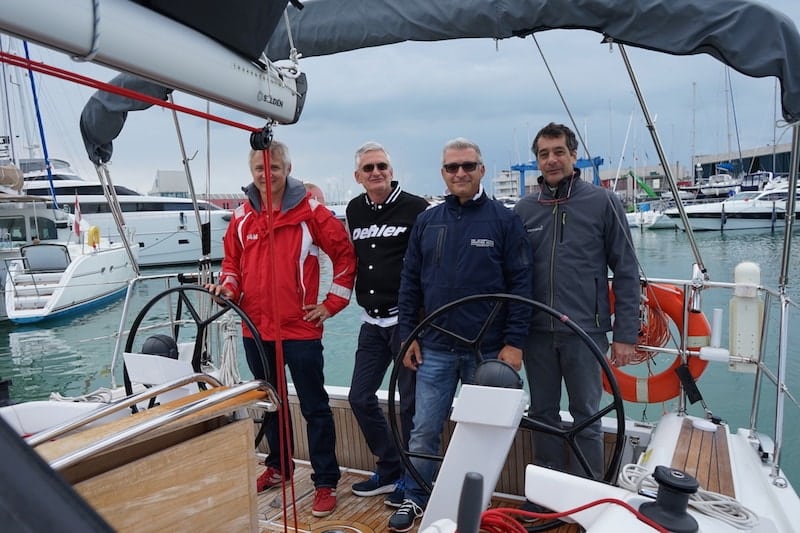
Even when the central table is mounted, volumes in the cockpit guarantee good circulation on board and a totally unencumbered space during maneuvers.
Moving forward, we like the stainless steel handrails on the coachroof that, even if not remarkable from an aesthetic point of view, are certainly essential to handle any sea conditions and to preserve safety and circulation on board. The non-slip surface of the deck is equally well-arranged and efficient as well as the toe-rails that, printed directly on the hull, guarantee both a safe support and a pleasant appearance.
Crew can enjoy a lot of spacious lockers positioned at the foot of the coachroof and under the cockpit seats as well as a convenient box designed to accommodate both the chain and the electric windlass.
In the light of these first necessary considerations, which clearly demonstrate the quality of the project, we are going to leave the port and carry out our sea trial.
Dehler 38 C Sea Trial
Sea and weather conditions seem to be perfect to sea trial a boat designed to handle even the most annoying Mediterranean winds and streams. Out of the port, we’re welcomed by a 6/8-knot true wind and long waves.
The Dehler 38 nevel fails. 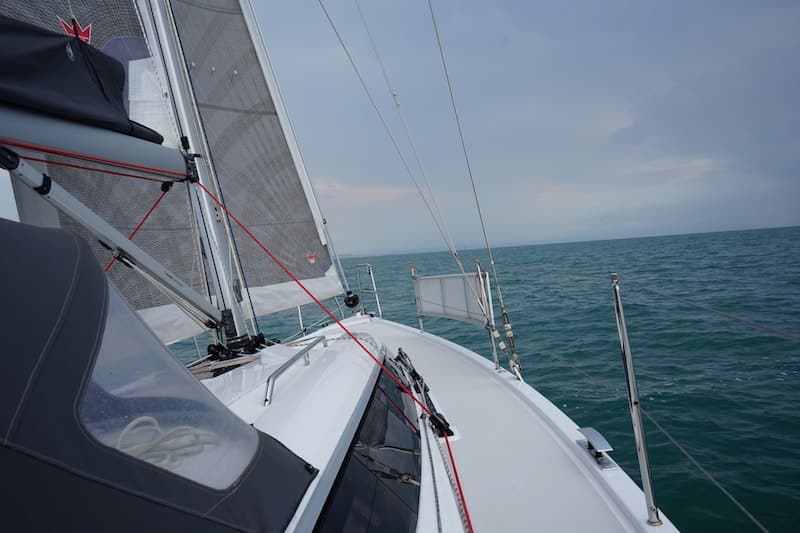
Equipment is properly sized for the charges it is under, winches are appropriate and require no effort for sail trimming.
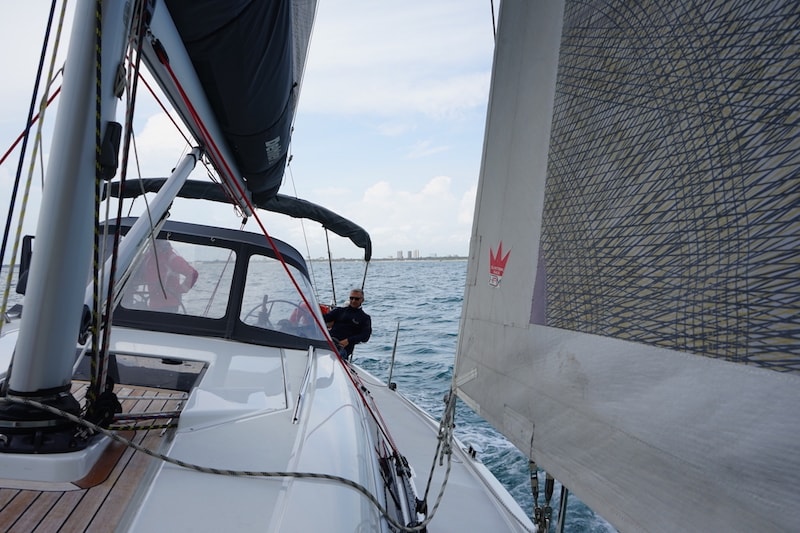
The natural predisposition of this boat to maintain course makes steering pleasant and exciting, without the need for continuous nervous corrections by the helmsman.
The series of turns we perform clearly shows the sporty soul of the Dehler 38: fast and tight, they never compromise speed.
Jib fairlead trimming is guaranteed by a rail adjustable from the cockpit that, through a geared-down sheet, makes clew trimming really simple.
After sailing close-hauled – it was a really funny moment – we’re ready to hoist the gennaker. Mounting the tack on the fixed stem head, the maneuver is simple and we have no problems also thanks to the grip available under our shoes that gives us a great sense of stability. Bitts – three on each side – are retractable and, above all, they prevent sheets from get jammed when gybing.
The aft sail of the Dehler 38 C is full and well suited to wind conditions, allowing great performances even at low speed.
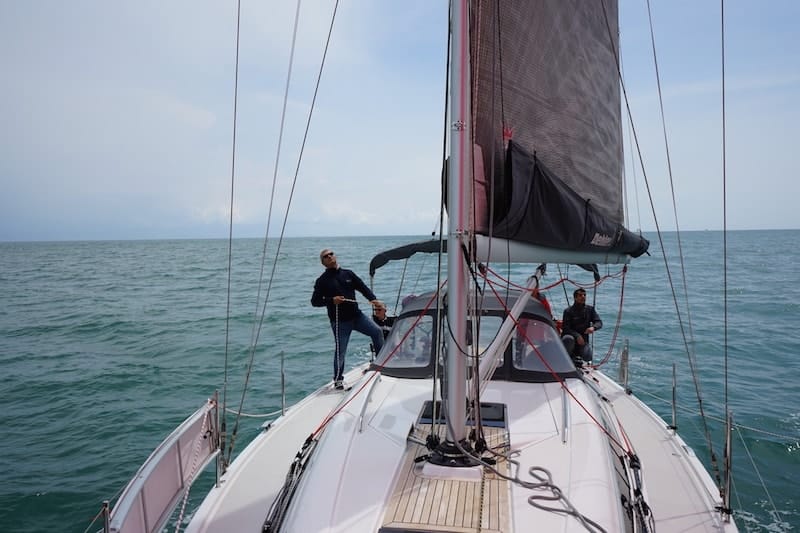
Comfort and safety are not directly proportional to factors like huge interiors and overly easy maneuvers; they are specific characteristics of well-balanced seaworthy boats and this 38-footer certainly features all this qualities.
Mainsail + Jib Under Sail Performance. Competition Version
wind: 7.3 knots
| Apparent Wind Angle | Speed (Kn) |
| 30 | 6.4 |
| 35 | 6.7 |
| 40 | 6.8 |
| 60 | 6.4 |
| 80 | 5.2 |
| 90 | 4.8 |
Under Power Performance
30 HP- Saildraive- two-bladed folding propeller
| rpm | speed (kn) |
| 700 | 2.9 |
| 1,000 | 2.7 |
| 1,500 | 4.1 |
| 2,000 | 5.5 |
| ,500 | 6.7 |
| 3,000 | 7.8 |
Dehler 38 C: Interiors
Once we get back to the port, we explore Dehler’s interiors in order to analyze all the elements related to livability, which is another important aspect in the design philosophy of this boat.
At first glance, we realize that spaces and comfort must be the highlights of this 38-footer. Both in the central section of the hull and inside the forward cabin, the prismatic coefficient is remarkable and we feel like we are within highly ventilated and bright spaces, perfect for a comfortable stay even in the event of heeling.
Equipped with a central table which can seat 5 adults, the dinette is completed, on the starboard side, by a galley with sink and chest freezer whose low door is suitable for the stowage of heavy bottles and products; on the port side, instead, there is a chart table.
Situated just behind the chart table, the bathroom features a washbasin and a shower/wc compartment, separated by the dinette entrance door.
Drawers and 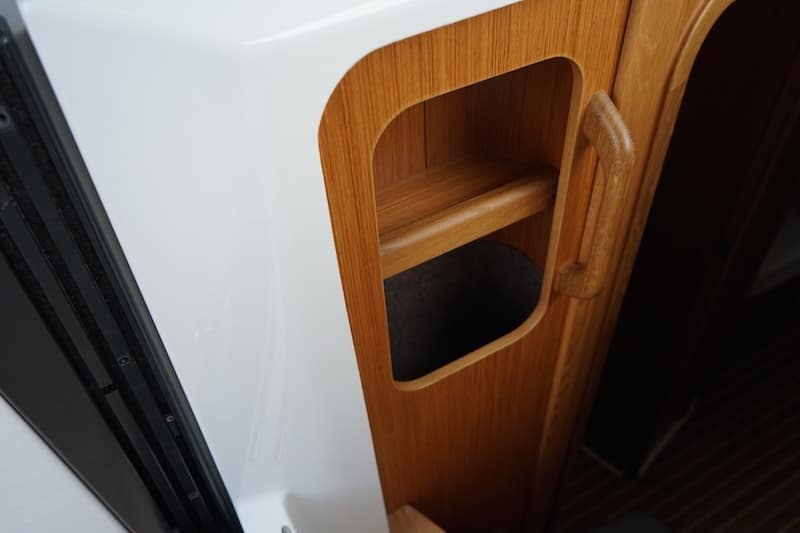
Another detail we’ve appreciated a lot is the storage compartment located under the hatchway on the sides of the ladder. Objects that need instant access like trail-lines, pliers, torches, binoculars and so on will find their natural safe location there.
Conclusions
Offered for sale at € 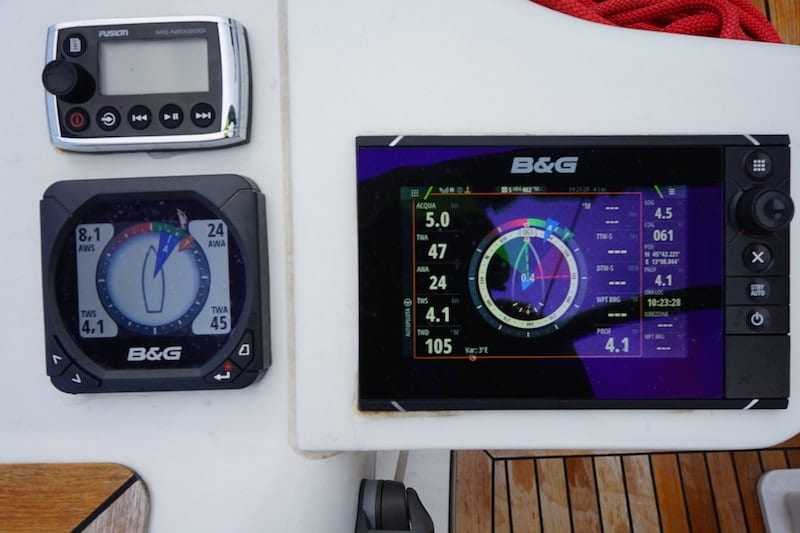
The boat features indeed ORC parameters ( Competition version) and a GPH of about 600; not bad for a fast boat, able to achieve good results. In our opinion, this boat is also perfect for double-handed navigation thanks to its easy handling enclosed in a not excessively long hull which can therefore bear reasonable charges.





















